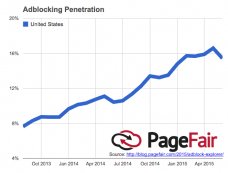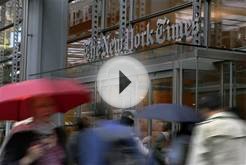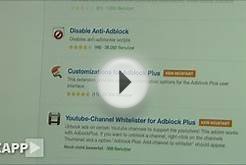Disrupting the media industry is easy. Not long ago, I moused over to AdBlockPlus.org, clicked on a green button that said, “Install for Safari, ” and fewer than 10 seconds later, ads had vanished. All of them. Goodbye iPad ad that unfurled down my screen. Goodbye blinking mattress ads. Goodbye car ad following me from site to site. This immediately became Web surfing nirvana: pages loaded faster, my browser stopped randomly crashing, my whole computer ran better. The Adblocker Plus plugin even told me how many ads I’ve dodged in the last couple of months: more than 35, 000 and counting.
I am not alone in my love for ad blocking. Every friend I tell about it thanks me with extreme enthusiasm, as if I’d just changed their flat tire. This is how ad blocking spreads: one person discovers the blissful Web, then tells everyone they know. A phenomenon that began several years ago in online gaming circles—you don’t want to get between gamers and their zombies—has swept into the mainstream. A new report from Adobe and one of several startups helping publishers fight ad blocking shows that 198 million people globally are now blocking ads, up 41 percent from 2014. In the US, ad blocking grew 48 percent from last year, to 45 million users. A recent Reuters Institute Digital News survey put the numbers even higher, saying that almost half of all US internet users block ads.
Taken alone, my 35, 000-plus blocked ads probably aren’t doing much damage to the news industry; maybe a campaign reporter will be forced to stay in a Marriott Courtyard instead of the W. (Sorry.) But taken together, ad blockers are hitting publishers in their digital guts. Adobe says that $21.8 billion in global ad revenue will be blocked this year.
Users are inadvertently putting their favorite websites out of business.
The damage is more than financial. It’s existential. The rise of ad blocking comes just as the media industry had settled on a revenue model to move forward after years of disruption and pain. The new model looked a lot like the old one: circulation revenue plus ad revenue equals sustainability. With so few people willing to pay for news, advertising was supposed to bring up the rear. But publishers seem to have totally overlooked the fact that, while print ads were relatively innocuous and unavoidable, digital ads are different. They aren’t static. They blink. They follow. They irritate. And readers can do what they never could in print: erase them. Now, a frightening reckoning is at hand, a perhaps terminal diagnosis that few seem willing to accept or even acknowledge.
“For publishers, ad blockers are the elephant in the room, ” media analyst Frederic Filloux wrote a few months ago. “Everybody sees them, no one talks about it.” I asked numerous publishers and ad platforms how much ad blocking they were seeing and what they were doing about it. Most didn’t reply. A Google spokeswoman did tell me this: “We believe that ads help fund free services and content on the Web. For our part, we’re continuing to invest in ad experiences that are relevant and useful for users, ensuring that users have choice over their ad experiences online, and helping publishers continue to fund their content.”

















